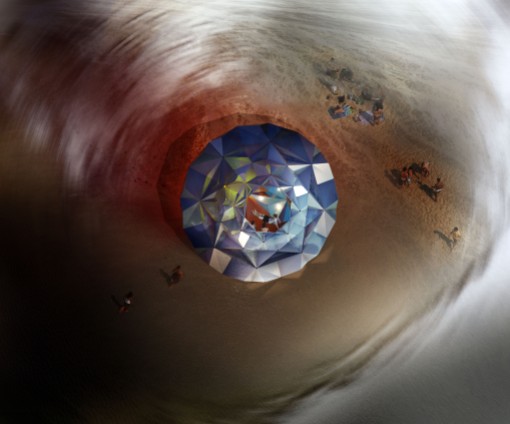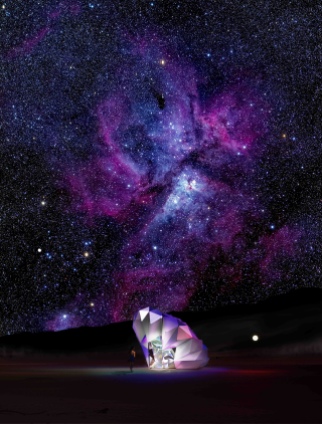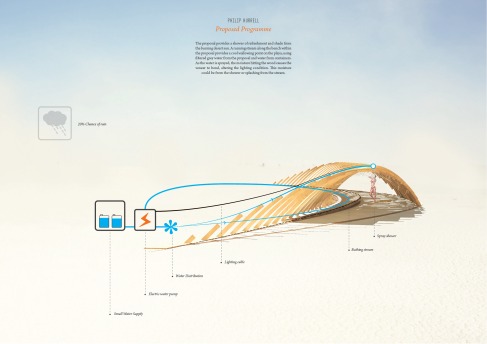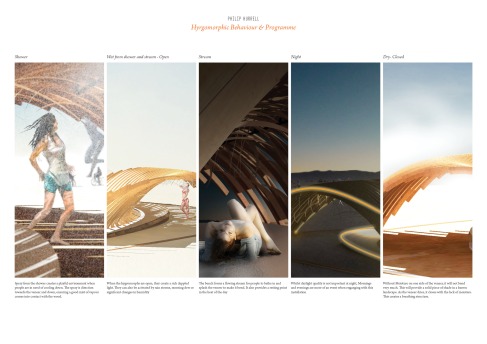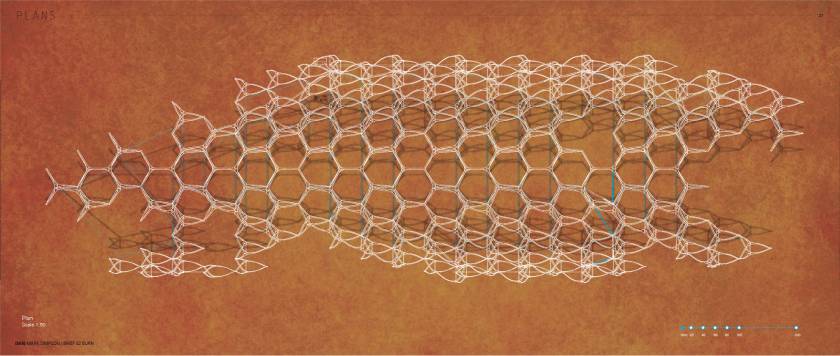aka The Desert Diamond
A spectral construct unearthed by the shifting sands of the Black Rock Desert, the Infinity stone is left. An Architectural Cipher it lays on its side, open and yawning towards the sun.
The structure symbolizes both the illusion of material wealth and its realization – The diamond, is hollow, and mirrored. It forces us to instead of gazing at the stone, to enter it, to look past it, into ourselves and onto the horizon.
The Desert Diamond is a structure based on the morphed and architecturally interpreted geometry of the brilliant cut diamond.
A series of triangulated panels, the principal structure is composed of multiple bent acrylic panels, with mirror tint rolled across the surfaces. Then it is fixed together with cable ties to build flexible joints. A base of wooden ply is placed on the floor to fix the structure, and provide a solid base.
The mirror tint is inverted, so outside the structure one can see inside, and inside is an infinity of reflections, of people, each other – and the desert. Light will reflect and bounce, a multivlance of colour and fire will sparkle and burn into the memories of those who experience the Infinity Stone.



